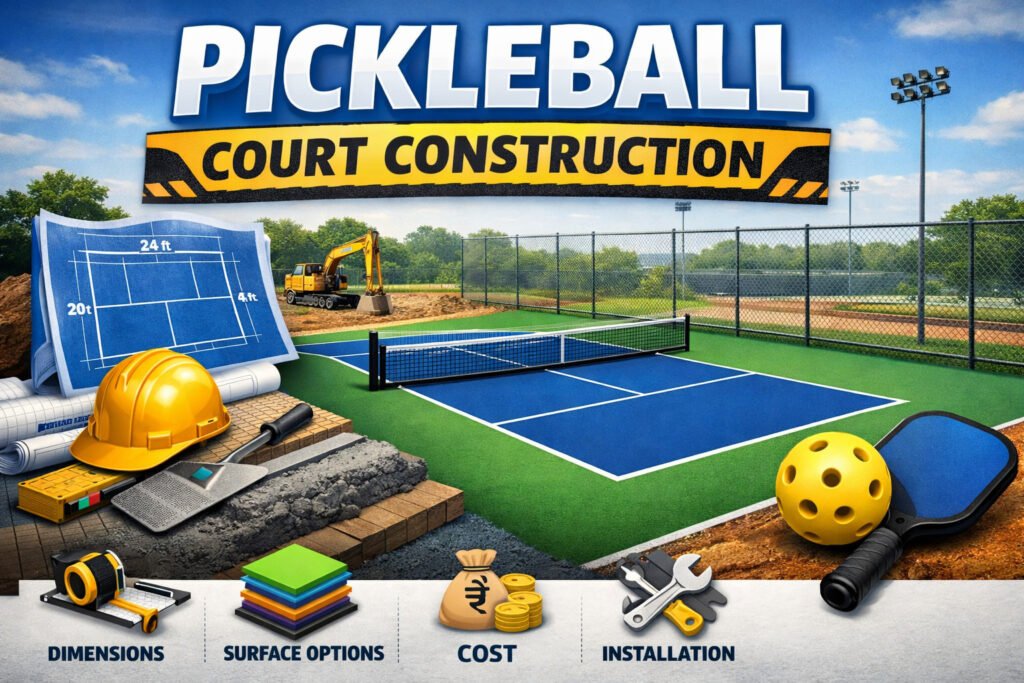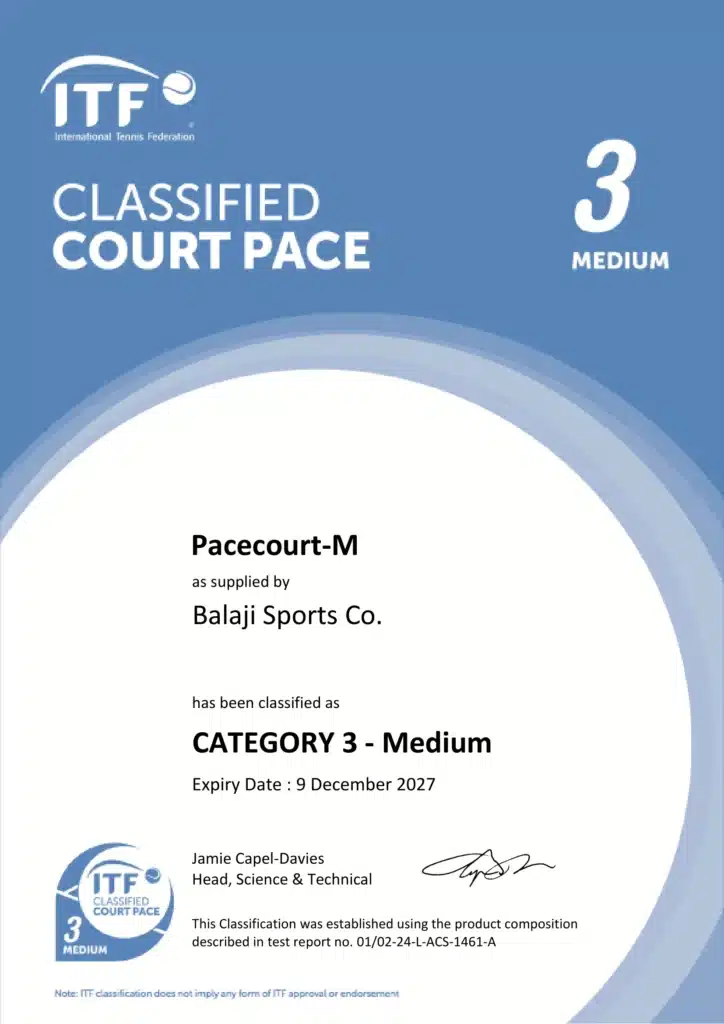Pickleball Court Construction: Complete Guide to Design, Cost, Dimensions & Installation
Pickleball is one of the fastest-growing sports worldwide, and its popularity in India is rising rapidly across schools, residential societies, clubs, and sports academies. With this growth, pickleball court construction has become a high-demand service for sports infrastructure developers and flooring contractors. This complete guide covers everything you need to know about pickleball court construction — from court dimensions, surface types, base preparation, fencing, lighting, cost, and maintenance — to help you build a professional, durable, and tournament-ready court. What Is Pickleball? Pickleball is a paddle sport that combines elements of tennis, badminton, and table tennis. It is played on a smaller court, making it ideal for urban spaces, schools, and residential projects. The sport is suitable for all age groups, which makes pickleball courts a long-term investment. Why Everyone Wants a Court in Their Backyard You see them popping up everywhere—in public parks, converted tennis courts, and increasingly, in private backyards. Pickleball isn’t just a fleeting trend; it’s the fastest-growing sport in America for a reason. It combines the strategy of tennis, the speed of ping pong, and the court size of badminton into a game that is accessible to all ages. But as the sport matures, so do the expectations of the players. A chalk line on a driveway doesn’t cut it anymore. Enthusiasts want the real deal. They want the consistent bounce, the traction, and the aesthetic appeal of a professional-grade surface. This guide explores the essentials of pickleball court construction. We will walk you through the critical steps of building a court that not only looks great but also ensures safe, high-level gameplay for years to come. The Foundation of Great Gameplay Why does professional construction matter? You might be tempted to just paint some lines on existing concrete and call it a day. While that works for a casual afternoon, dedicated players notice the difference immediately. Proper pickleball court construction is about safety as much as it is about performance. A professionally built court manages water drainage effectively, preventing dangerous puddles and slippery spots. It provides the right amount of “cushion” to protect players’ joints during long matches. Most importantly, it ensures a true ball bounce, which is critical for a sport that relies heavily on precision and spin. When you invest in quality construction, you aren’t just building a court; you are building an asset that adds value to your property and enhances the playing experience. Step-by-Step: Building Your Pickleball Court Correct dimensions are crucial for professional pickleball court construction. Official Pickleball Court Size Recommended Total Area Net Height Non-Volley Zone (Kitchen) Pickleball Court Surface Options Choosing the right surface is essential for player safety, ball bounce, and court longevity. 1. Acrylic Pickleball Court (Most Popular) Recommended for: Residential societies, clubs, schools, academies 2. Synthetic Modular Tiles Recommended for: Temporary courts, rooftops, indoor spaces 3. Concrete Base with Acrylic Coating Pickleball Court Construction Process (Step-by-Step) Step 1: Site Inspection & Planning Step 2: Ground Preparation Step 3: Base Construction Step 4: Acrylic Surface Installation Step 5: Accessories Installation Pickleball Court Color Combinations Popular color schemes include: Contrasting colors improve visibility and broadcast quality. Pickleball Court Construction Cost in India Approximate Cost Breakdown Component Cost Range (₹/sq. ft.) Base Construction ₹120 – ₹180 Acrylic Surface ₹80 – ₹150 Fencing & Net ₹1.5 – ₹3 lakh Lighting (Optional) ₹2 – ₹5 lakh Total Estimated Cost Indoor vs Outdoor Pickleball Court Construction Outdoor Courts Indoor Courts Lower maintenance Synthetic or wooden flooring Controlled environment Maintenance Tips for Pickleball Courts Regular surface cleaning Avoid water stagnation Inspect cracks annually Recoating every 4–6 years Net and line checks before tournaments Proper maintenance significantly extends court lifespan. Benefits of Professional Pickleball Court Construction International standard compliance Long-term durability Player safety and comfort Higher property value Low maintenance cost Why Pickleball Courts Are a Smart Investment Growing demand in India Requires less space than tennis Multi-age participation Ideal for schools, societies, resorts, and clubs High ROI with low operational cost Choosing the Right Pickleball Court Contractor Before finalizing a contractor, ensure: Conclusion Pickleball court construction is a future-ready investment for modern sports infrastructure. Whether you’re building a court for a school, residential society, club, or academy, following international standards, choosing the right surface, and working with experienced professionals ensures long-lasting performance and player satisfaction. With proper planning, quality materials, and expert execution, a professionally constructed pickleball court can deliver exceptional value for years to come.





